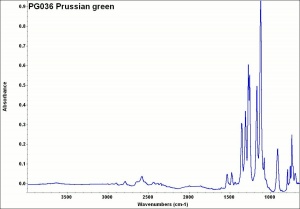Difference between revisions of "Prussian green"
Jump to navigation
Jump to search
(username removed) |
(username removed) |
||
| Line 7: | Line 7: | ||
== Synonyms and Related Terms == | == Synonyms and Related Terms == | ||
| − | verde da | + | verde da Prússia (Port.) |
-original: Pigment green 36; CI 74160; | -original: Pigment green 36; CI 74160; | ||
| Line 15: | Line 15: | ||
== Authority == | == Authority == | ||
| − | * | + | * Ralph Mayer, ''A Dictionary of Art Terms and Techniques'', Harper and Row Publishers, New York, 1969 (also 1945 printing) |
| − | * | + | * R.D. Harley, ''Artists' Pigments c. 1600-1835'', Butterworth Scientific, London, 1982 |
* Art and Architecture Thesaurus Online, http://www.getty.edu/research/tools/vocabulary/aat/, J. Paul Getty Trust, Los Angeles, 2000 | * Art and Architecture Thesaurus Online, http://www.getty.edu/research/tools/vocabulary/aat/, J. Paul Getty Trust, Los Angeles, 2000 | ||
Revision as of 06:44, 24 July 2013
Description
A green pigment originally prepared by the nearly the same process as Prussian blue. Prussian green was produced by omitting the hydrochloric acid step that converted the green to blue. However, by the mid 19th century, Prussian green sold commercially was prepared by mixing Prussian blue with a yellow pigment. Pink, a yellow dye, and gamboge were used occasionally and more often chrome yellow was used. The blue/yellow mixture has also been called Brunswick green, Hooker's green, and chrome green.
Synonyms and Related Terms
verde da Prússia (Port.)
-original: Pigment green 36; CI 74160;
M320-mixture: Brunswick green; chrome green; Hooker's green; malachite green; Pigment Green 15
Authority
- Ralph Mayer, A Dictionary of Art Terms and Techniques, Harper and Row Publishers, New York, 1969 (also 1945 printing)
- R.D. Harley, Artists' Pigments c. 1600-1835, Butterworth Scientific, London, 1982
- Art and Architecture Thesaurus Online, http://www.getty.edu/research/tools/vocabulary/aat/, J. Paul Getty Trust, Los Angeles, 2000
